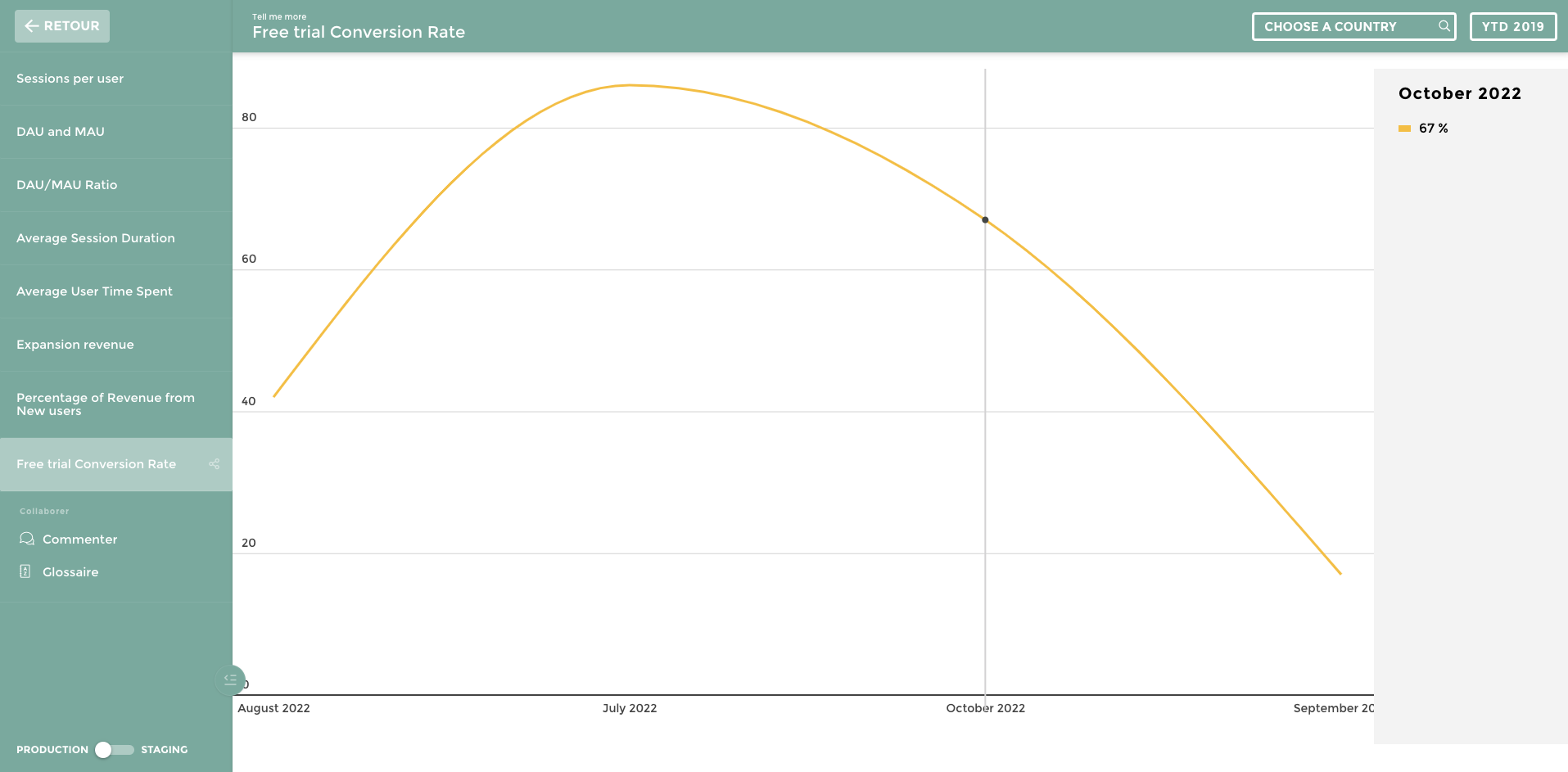Free Trial Conversion Rate - What is it?
Free trials are the backbone of SaaS companies, with decision-makers constantly monitoring their trial-to-paid conversion rate and comparing it to their competition's. How important is your free trial conversion, and can it make or break your SaaS business?
The answer to both of those questions varies for companies with different types of products and services, but for most SaaS businesses, free trial conversions are the main source of lead generation that leads to growth and an increase in revenue.
To give you a better idea of what a free trial conversion rate entails, we'll dive into the different types of free trials, how to calculate the free trial conversion rate, and why increasing your free trial conversion rate can unlock the full potential of your web-based product.

Types of Free Trials
The world of free trials is vast, and many companies put their own personalized spin on how they offer potential users a sneak peek of their product. However, there are four main categories of free trials:
- Opt-in free trial: Users don't need to provide a payment method and must choose to purchase a plan at the end of the trial period.
- Opt-out free trial: The user must provide a payment method before the start of the trial, and if the user does not cancel, they are automatically billed.
- Unlimited free trial: The user has access to all product features for a defined period of time.
- Limited free trial: The user is given access to a limited amount of features or the most basic plan.
There is no right or wrong free trial to use since all businesses offer unique products and feature sets that shape their objectives and goals. We'll break down what each free trial means for you and the best ones to use for various companies and situations.
Opt-in vs. Opt-out
Both opt-in and opt-out free trials come with their own sets of pros and cons, but both can be beneficial to the right business.
Opt-in free trials are effective for attracting as many members of your target audience as possible. These free trials require no commitment for potential users, and if they find value in your product and become activated, chances are they'll stay longer and offer high customer lifetime value.
Opt-out free trials require more commitment from potential users by requiring them to input payment information. They offer a lower onboarding cost since the user will have already inputted their payment method and already understood your product's value. The main downside of opt-out free trials is higher marketing costs to demonstrate product value and drive users to commit. However, if your product is stable and polished, opt-out free trials offer a higher conversion rate.
Unlimited vs Limited
Unlimited free trials give the user a complete experience of your product. The goal of an unlimited free trial is to grant potential users access to all of your product's features to show product value. However, like with any system that involves benefits for free, you risk users exploiting it. Users can make multiple accounts and use your complete product without ever paying.
Limited free trials address this potential problem since you aren't providing users with your complete product, which prompts them to unlock your product's full feature set. It is important to include key features in a limited free trial to give users a reason to activate; if your users don't find enough value in the features included, then a limited free trial can backfire and lead to low conversion rates.
How to Calculate Free Trial Conversion Rate
Your free trial conversion rate is the percentage of free trial users that activate and become paid users. To calculate the free trial conversion rate, use the following formula:
.png?width=630&name=Churn%20Rate%20Formula%20(1).png)
This formula will yield your conversion rate percentage. For example, if your free trial generates 400 users and 50 converted users, your conversion rate will be:
50/400 x 100 = 12.5%
Why Free Trial Conversion Rate is Important
Knowing your product's free trial conversion rate is one of the most effective ways to understand if your customers are extracting value and if they are willing to pay for it.
If your free trial conversion rate is high, your company will grow faster and spend less to acquire customers (lower customer acquisition cost).
Because customer acquisition cost, free trial conversion rate, and lifetime value are closely related, it is important to monitor these factors closely to see if your product is sticky or if upgrades are needed. Monitoring your free trial conversion rate can be as simple as automating the formula and tracking the results, but a one-size-fits-all approach will yield limited insights.
Segmenting members of your target audience based on collected information can provide insights into which persona and company size is most interested in your product. With these insights, you can target these potential customers more heavily. Using an analytics tool to monitor free trial conversion rate is the most effective way to understand your users. A tool like Toucan can turn your free trial data into a story, detailing where your free trials are succeeding and failing.


.png?width=710&name=CTA%20Template%20%E2%80%94%20Free%20Trial%20(2).png)